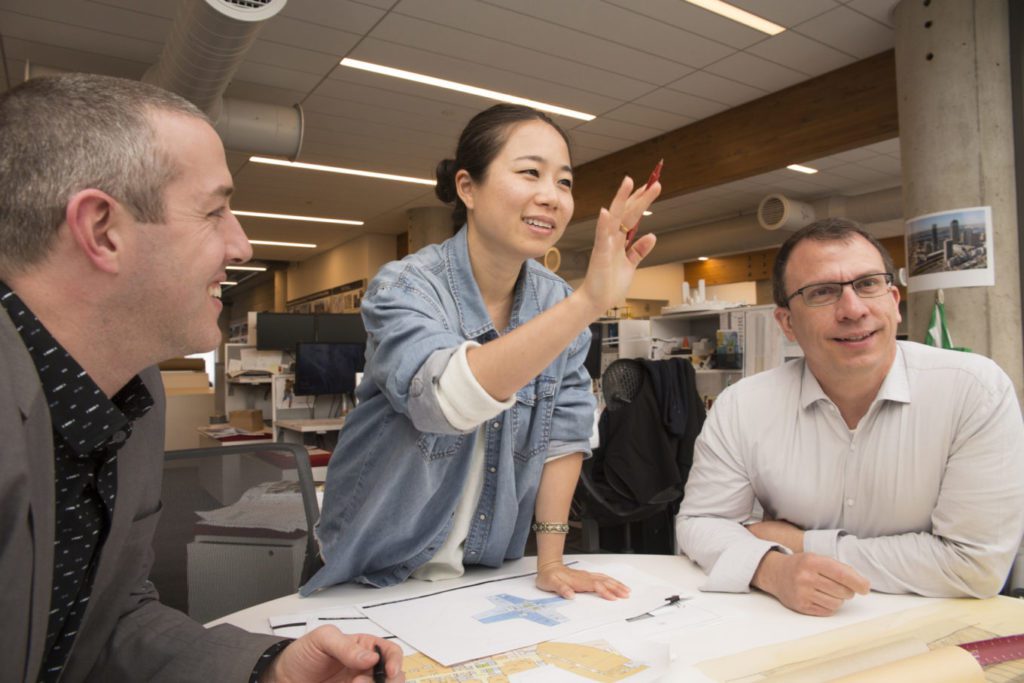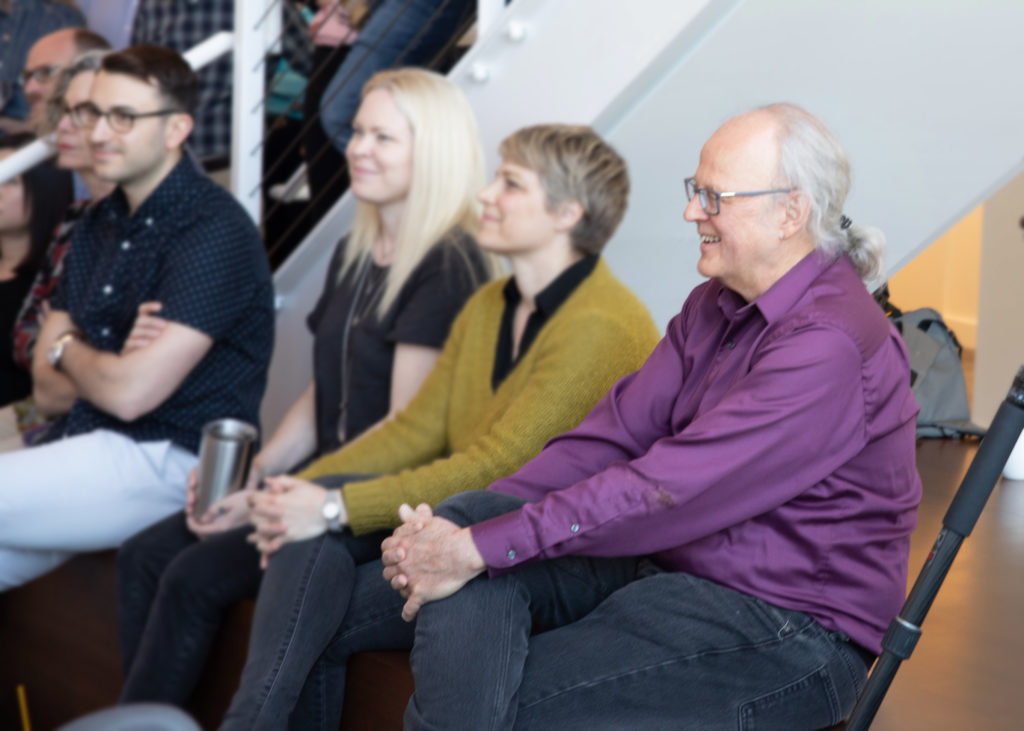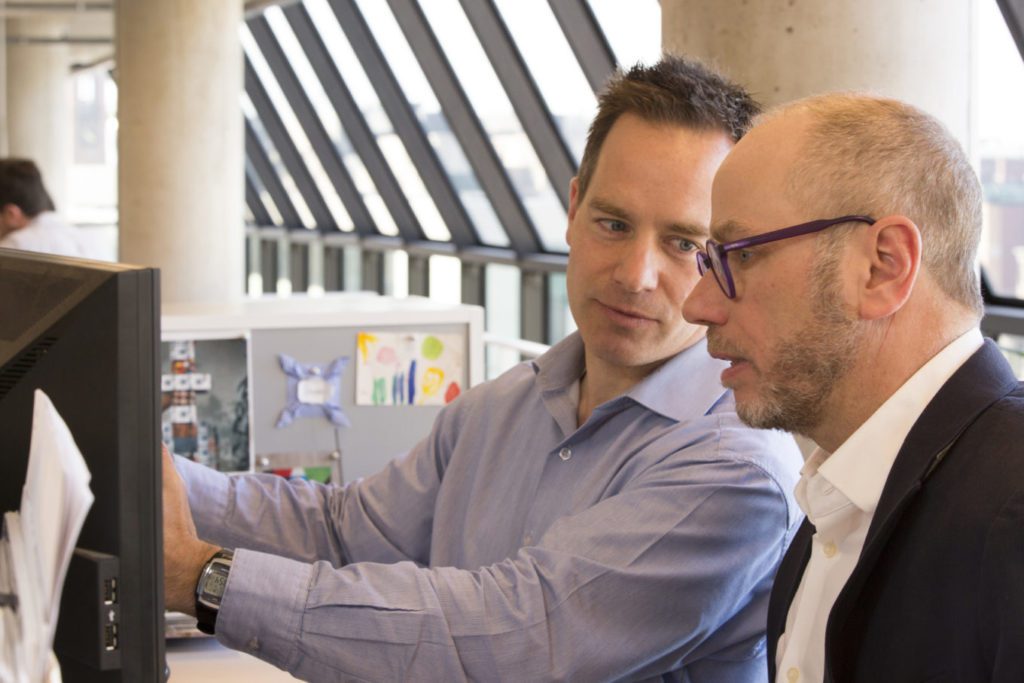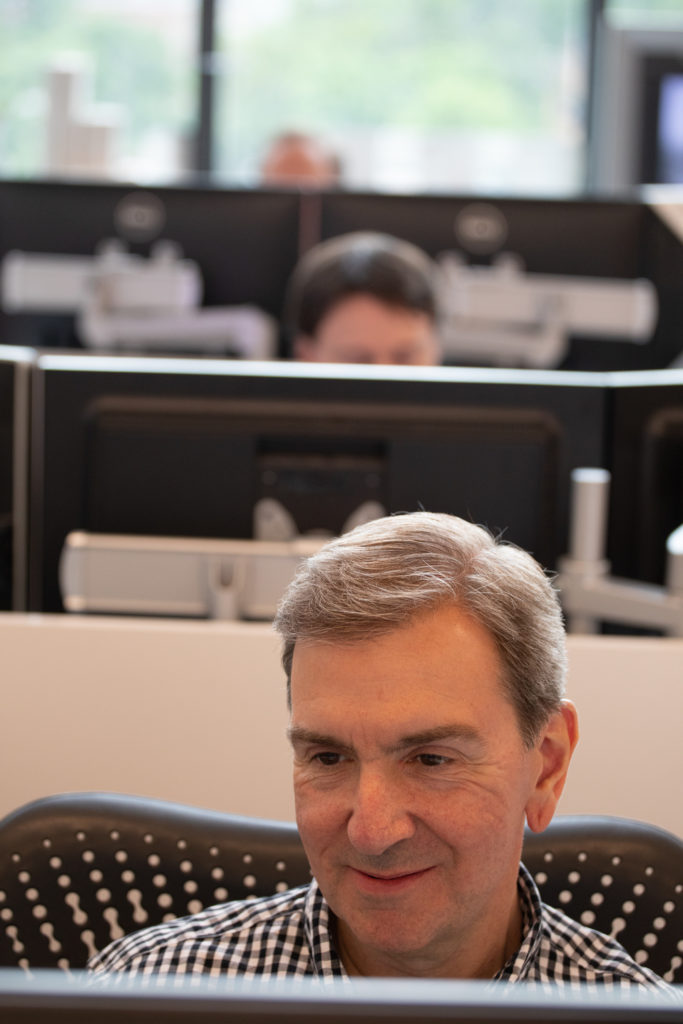How to Preserve Urban Character with Stefanie Greenfield, AIA
Stefanie Greenfield, AIA discusses her design inspirations and why preservation and restoration are ever increasingly important architectural methods.
View PostHave you ever wondered, “How can I become an architect?”
Not everyone knows what they want to be when they grow up and not everyone at CambridgeSeven knew they wanted to be an architectural designer. We chatted with four people in our office about their lives pre-architecture and how they transitioned to the design field. In the interview you’ll hear from Wei Gao, AIA, whose previous career comes as a big surprise, Bert Bremer, AIA, who experienced a series of fortunate events, Douglas Flandro, CPHC, LEED AP BD+C ID+C, who found his passion while overseas, and Mike Ricciuti, AIA whose creative background serves him well in his current role.
Listen to the interview or read the transcript below as they tell us about where they started and how they found their way CambridgeSeven.

I was in academia, I was actually in a Ph. D. program in the University of Maryland studying developmental linguistics. I was in that program for four years and teaching University psychology classes at the same time; I taught developmental psychology and I taught researching methods for those years.
I was in healthcare, not as a healthcare professional, but a variety of jobs.; it wasn’t so much a career choice. I was in New York City in college and it wasn’t working out. The Vietnam War was happening and I got a very low draft number. When I dropped out of school, I lost my student deferment and I applied for conscientious objector status. I put all my stuff in a UHaul van and drove to Boston, found a studio apartment and walked around the medical area until I found a job.
I started in housekeeping and then in the orderly pool. And every time I was ready to leave, I got a promotion. Before I left, I was a department head and I had about 50 people working for me doing supply chain logistics, printing, receiving.
I studied theater and film. I was mostly interested in costume design and set decorating and some set design, so that’s what I did for my undergraduate work. I worked in that for about two years after my undergraduate work. I worked for children’s theater, designing their costumes and acting in their shows.
I still love that world. I might do a little set design when I retire or when my kids get a little older. It’s fun.
Broadly speaking – journalism for 18 years. But I had already gone back to school part-time for three of those years. So, I was working in journalism while I started my transition to architecture.
It was four years in and I had been to several conferences and had papers published, and passed dissertation… and then suddenly had the realization that this is not what I want to do in the future, because after, especially the last two years in that program, the conferences that I’d been to and all of the research topics in the field seemed to be … not very satisfying. I wanted to have a career that is more involved with reality and more tangible than brain research.

I always had a hobby interest in architecture; I bought a lot of books, did a lot of reading, but never thought I could make a career out of it. I ended up going to career counseling and doing the Myers Briggs test and they said, “Yeah, architecture is for you. Oh and by the way, the BAC late enrollment ends tomorrow. So go down there and take a take an intro class;” So that’s what I did.
I was actually living in London and I got a job at the Museum of the Moving Image. I knew from going there that it was one of my favorite museums that I’d ever been to. I just took tickets there for the museum as well as their film theater so I got to work at the London Film Festival, just taking tickets and watching movies! I also talked to the designers of the exhibits and I thought it was a really interesting path.
Well, you know there’s a lot that led up to it. I got my undergraduate in journalism and I started working in local newspapers on a part time basis. And newspapers are sort of like apprentice system where you’re happy just to get a job somewhere. They pay you nothing and work you to death. I did that at several places and decided that that was a hard road. So, I transitioned into covering business. And worked for a wire service for a while. A wire service is an organization that covers news and there are member newspapers pay a fee to get access to the stories. So I did that but I covered business and technology and through that wound up more in technology industry.
And I ultimately wound up at a web startup called CNET.com, which is still around. And I was one of the first employees. Then CNET was ultimately acquired by CBS Television Network and Viacom which is a much, much larger company. So I went from a startup as one of the first hundred people hired to a company that was 15,000 people. And toward the end of this, I was spending all my time managing people and none of my time editing or writing. And I decided really didn’t do that for a living. And I had an interest in design and construction and I had done furniture design. I actually had gone to school for furniture design program at a school in Boston called the North Bennet Street School. I had done that after a while and realized I couldn’t really make a living doing that; it’s a really hard way to make a buck. So, I said, “How else can I express this?” Architecture had always appealed to me, and I thought if I’m going to make a break, I might as well do something big and that’s what I did.
I always like art and design. And in undergrad, I took a lot of studio classes, I had a minor in studio art. So when considering changing career paths, that came to mind, but I didn’t have enough confidence to think that art and design can be a sustainable career for me. And then at that time, I met someone in Boston who just joined BAC and said that Boston Architectural College accepts anyone who applied, but you’ve got to be strong enough to stay and to graduate because at that point, graduation rate is 8%. So I thought it’s a good opportunity to be able to switch right away and I think that I had enough persistence to push through a five year program.

It took what I really loved about theatrical design and telling stories – looking at the psychology of the story and telling a story through the space. It really intrigued me. I ended up moving to Washington, DC, I got an internship at the Smithsonian, that was kind of my foot in the door, and then ended up going back to graduate school at the Rhode Island School of Design and their interior architecture program. And one of the tracks in the interior architecture program was Theater Design and another one was Exhibit Design.
It’s definitely a different schedule! And a lot less sleeping. A lot more work. It was tough, but it was enjoyable. The first year of the architecture program was tough for sure. But, because that program is so demanding, I didn’t really have time to think about it because all of my energy was going into studio classes and trying to get assignments done. So that forced me to transition! And then at the end of the first year, I got a job. So that takes care of the rest of it. I said, “I’m in architecture for sure now.”
I ended up doing continuing ed at the BAC for about two and a half years. I’d take one or two classes at a time in the evening while I was working at the hospital during the day and I got some tuition reimbursement for it from the hospital, which was fabulous, and then I finally decided I was ready.
I was very worried about how I would do in school after all that time and having it not work out the first time. After two and a half years, I just decided I was ready to leave the hospital.

It was a firm that did a lot of surveying, which is a pretty dry job, but good for an entry level person to learn more about what’s really going on in the field as opposed to theoretical designs. So, I surveyed all the Boston partner hospitals for their ADA compliance and made a package of what improvements could be done to fix all the non-compliant components. That was a five month effort and after that, they hired me full time.
Well, it was a terrible time to enter the architecture field because essentially everyone had been laid off because it was 2009 or 2010 and there was a recession. And at the time I was at MassArt, a firm called AddInc had designed a new dorm for MassArt and I went on a tour of the dorm. Very pointedly, my plan was to find somebody From AddInc, talk to them, and convince them to give me some kind of job. I found out that they were hiring people and wound up getting a job there, and that was my first job.
It would have been good to know that the job is so interesting. Because when you’re in a firm like CambridgeSeven, projects and clients are pretty diverse. Every job you do, you’re learning about a new industry – how they function, what programs go to their daily work, and now I’m also learning about animals and kids and museums. So that really makes the work not repetitive. It’s challenging, but very, very interesting.
The only thing I could think of is the level of detail that we have to monitor. Once you get into construction administration, and there’s so many like Excel spreadsheets with graphics in the exhibit or the electrical outlets… there’s just there’s a lot of detail, a lot of coordination that can be a little bit tedious. I enjoy doing that, because it’s part of telling the story. But I think that’s the part that I didn’t expect coming into it. And the whole process from beginning to end was a little bit of a surprise to me. In theater design, it’s like six months from beginning to end. You have to meet with the director, you have to design it and build it as quickly as possible, and it’s up. But for exhibits and architecture, the projects last a lot longer, which is great, but they take a lot longer to get built. I also do a lot of sustainability work and there’s a lot of tedious tracking of details. But I find that when I’m doing it for sustainability, I have a lot more energy, it just feels really important. That’s one thing I love about CambridgeSeven is I can work a little bit in architecture, a little bit in graphic design, a little bit in exhibit design. And I’m not sure that there’s any other firm anywhere where I could do all of those things.
**One pleasant surprise was that in architecture there are so many career options. Design is one aspect of architecture but there are many other equally important skills such as personnel and project management and the ability to understand (and communicate to others) very technical information. Not everyone winds up at a desk with trace and colored markers. Many of us gravitate to more management-oriented roles.
**added post interview
Wei:
I think having experience doing empirical research helps in that my way of solving problems is pretty systematic and methodical. I can extract essential information and prioritize tasks without getting sidetracked by unimportant details.
It was interesting working at Beth Israel because whenever we had a new building or renovation going on, I’d end up being on a committee that was talking to the architects. It was interesting seeing how that process works and how complex it was and how many different pieces had to fit together. And some of the things that I was doing involved a lot of customer relationships and employee relationships. I think I got a lot of people skills out of out of that in terms of working with people at all different levels and having a lot of respect for everybody who was part of the process. Everybody has the thing that they know and the thing that they’re good at and if they take things seriously, it’s easy.
Yeah, I think the main thing is that full mindset of really telling a story through the design and the experience of looking at a script and figuring out what’s important in that story. What are the things that you want to be really obvious about with the audience and really hammer on the head? What do you need to get out of this story? What are the things you want to be more subtle? How do we want to feel? What is the “what”? How can we tell the story and really emotionally connect to the people? I think that’s something that’s really explicit that you really need to do in Theatre and Film design. And it’s been fun to take that into exhibit design. I think that any good designer would do that but I think that I think more about that because of my experience in theater.
It’s working in teams which you do all the time in journalism. It’s being organized and everyone knowing what they’re supposed to be doing so you get something done before a deadline. Journalism is all about deadlines.
Stefanie Greenfield, AIA discusses her design inspirations and why preservation and restoration are ever increasingly important architectural methods.
View PostJacob Bloom, LFA tells us about the Living Future Institute and shares about CambridgeSeven's commitment to the Living Building Challenge, part of our ongoing focus on the far-reaching implications that our design choices can have on our community and the planet.
View PostOur three in-house Certified Passive House Consultants provide insights to the significant benefits and range of applications of Passive House standards.
View Post